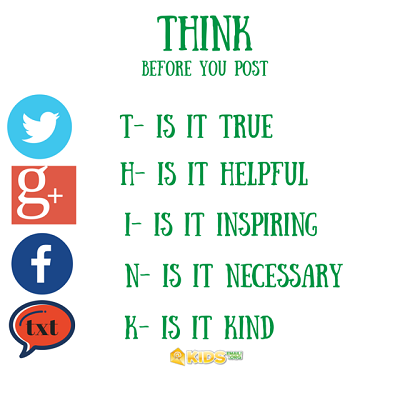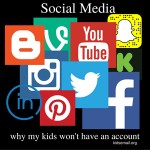 Heather Bowcutt
Heather Bowcutt
Blogger at KidsEmail.org
Facebook | Twitter
Our kids are digital natives. They are exposed to and use digital devices from a very early age. In those early years, we work very hard to ensure that our children are in a “closed” environment – protected from the wily ways of the worldwide web.
Once they’re in school their worlds start to open, and the needs for broader access to information are integral to their learning. With that expanded access comes greater responsibilities – for them and for us, as parents.
If there are Internet-capable devices in your child’s life, then it is time to start thinking about digital citizenship.
The fact is that each of us has – and leaves behind – a digital footprint. Carrying around a smart device is part of that digital footprint. As adults, we can point to experiences where something we did in the past influences something that happens today. We “get” that something we do online can follow us for the rest of our lives.” Without that box full of rueful events, it is much harder for our children to grasp.
Regardless, it is still an important task that falls to us, as parents. Begin early. These aren’t big, technical lessons, they complement what we are already teaching our children about how to behave in the “real world.” Look over these six easy rules – they will leave a positive impression in your child’s daily life, as well as ensure a safer, healthier digital footprint.
Six Rules of Digital Citizenship
Rule 1: Treat others with respect.
Your child probably hears about bullying at school. This is the add-on: Never bully, troll, make fun of, or harrass people online. Report any behavior that appears to be bullying.
Rule 2: Do not steal.
Most kids think about this rule in the context of “physical” items (e.g., candy, sister’s toy, teacher’s answer sheet). It applies to traditional activities like plagiarism and copyright, exacerbated by the unfettered access to information available on the internet. Give credit where credit is due is not a new idea. However, stealing someone’s identity (or creating a fake one) is.
Rule 3: Shop on secured sites.
This is a rule for older children. Show your kids how to read a website and what logos to look for when they are shopping.
Rule 4: Never give out personal information, including phone numbers, addresses, and “check-ins” on social media.
From an early age, we teach our kids about “stranger danger.” It is something they’ve heard and can understand when they “see” someone. Because they are separated by a computer screen, though, many kids have a harder time seeing danger on the other end.
Rule 5: Social media is not a place to air drama- keep that for a journal.
If you can’t say something nice, don’t say anything at all. Remember that? Same applies to ranting on social media, too. In our house, we have a very simple threshold: if you wouldn’t want Grandma to read it, then you probably shouldn’t say / type it.
 Rule 6: Use the “Think” rule.
Rule 6: Use the “Think” rule.
Although this image was created to emphasize care in posting anything online, it applies to real-world engagement, as well.
Technology is moving forward quickly. As fast as it has moved in our lifetimes, we know technology will continue to evolve far beyond what it can do at this moment.
Taking the time to instill digital responsibility at an early age is crucial for our kids as they move forward from playground friendship to Facebook friends. These same simple rules will apply all along that journey. They also help us in our efforts as parents to give kids a clear understanding of what can happen online and to offer ways to keep their digital footprints positive.
This post was originally posted on the now-defunct Mom’s Choice Matters blog on 4/9/2015.
About Heather Bowcutt
Heather is the is the primary author of the Kids Email blog, where she offers safety and parenting tips, for when the kids are online and off.
View all posts by Heather Bowcutt here.
Kidsemail.org is an award-winning, safe email service for kids. Use Kids Email to safeguard your children from language, predators, images, and video, while keeping them connected to loved ones and learning about technology in a safer environment.
Save







3 Comments on “6 Rules of Digital Citizenship for Kids”
This information is useful to us because we can still be social but at a safe location in our homes.
This is one good website I learned about.
This is very helpful for someone like me in school well last day but we ar doing good didital citizen projects